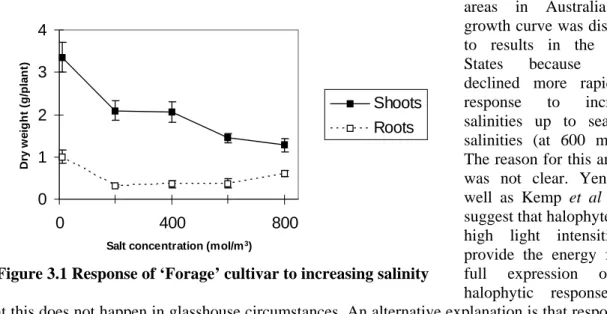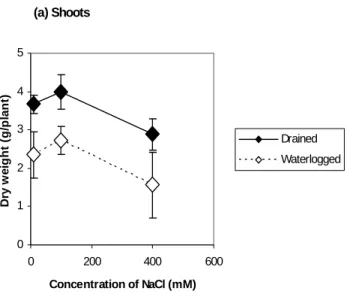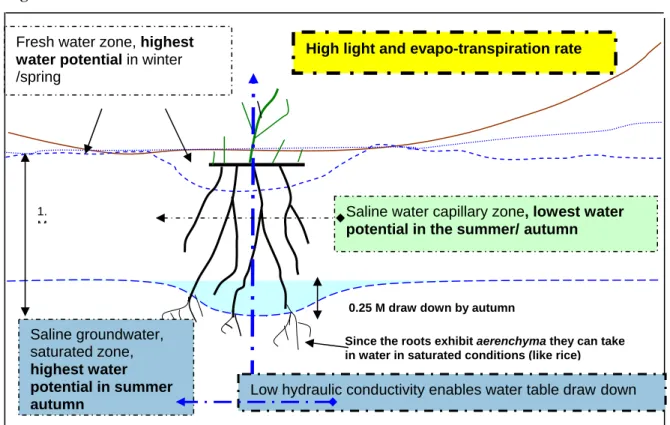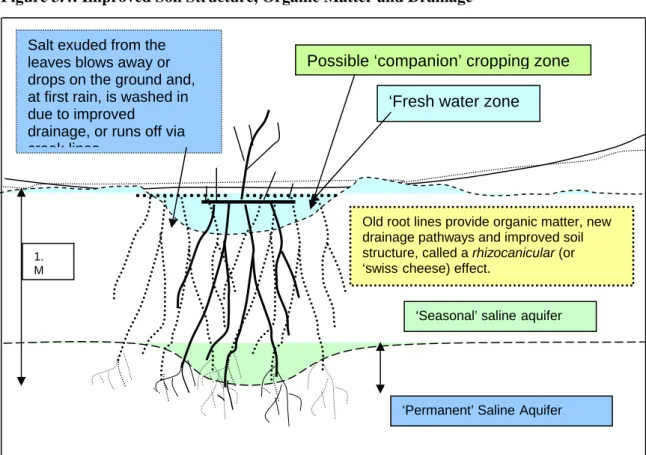Recommendations are made for the ecological range of cultivars and establishment requirements. NyPa Incorporated of the United States owns the patent rights to the plants and has arranged their use here through NyPa Australia Pty Limited.
Background to the Project
Plant Introduction to Australia
Samples were transplanted to two farms in South Australia in early 1995 and to a farm near Wickepin in Western Australia, with a second sample kept in Perth.
Objective
Literature Review
Summary of Methodology
Specific Methodologies
- Agronomic Investigations in the Field
- Feeding to Ruminants
- Glasshouse Investigations
- Preliminary Milling Characteristics
- Collation of Reports
They then measured the depth of the hole and washed the roots to separate them from the soil and thus allow observation. Specific observations were made regarding the relative prevalence of grass, wild wheat, and forage.
Commercialisation
The effect of salinity on growth was determined by planting rhizomes in sand cultures irrigated with five levels of salinity and 800 mol m-3 NaCl. Plants were allowed to stand for 14 days in a salt tolerance experiment. It was screened for basic laboratory grinding properties at the SARDI facility at the Waite Institute in South Australia.
The results were then discussed with the Baking Faculty at TAFE's Regency Park Institute and with a commercial noodle manufacturer. This involved making plant material available to a farmer in Western Australia and a farmer in South Australia for the production of commercial quantities of planting material. As part of the commercialization plan, NyPa assisted the first-tier grower in South Australia to apply for a farm innovation grant from the Department of Agriculture, Fisheries and Forestry's (AFFA) Farm Innovation Program.
Investigations on Established Plant-outs
- Lake Alexandrina
- Clover Ridge
- East Wickepin
- Underra
- Kerang
The plants grew strongly when the soil temperature was warm, and reached their strongest growth in the summer and fall. The underground water in this place rose to the surface with the winter rainfall, but in the summer it fell below three meters. The high clay content of the soil at this site would have ensured that the soil had a lower hydraulic conductivity than sites in South Australia.
The establishment of plants in the additional two ha was more successful than the additional plantings in South Australia. The in vitro dry matter digestibility (IVDMD) of the 'Forage' was lower than the other grasses in the trial. During the winter of 2002, many of the plants that started to turn green in the bare areas dried up again.

Feeding to Ruminants
The site was also established to compare the production of 'Forage' with some other salt tolerant grasses (Puccinellia ciliata, Paspalum vaginatum and Leptochloa fusca). The lower ash content is achieved due to the salt being secreted on the surface of the leaf. The nutritional value of 'Forage' in this trial was not as good as that achieved in other trials in Australia.
An inspection of the plants in September 2002 found that the bare areas had turned green again and the plants were spreading and some freshwater plants, including clover, had invaded the area. These results do not adequately measure the potential productivity range of the plants under different plant nutrient conditions. All farmers responded positively to Feed Feed as a green bridge between late spring and winter.
Glasshouse Investigations
The project expanded the area to allow for larger scale nutritional observations, so that by September 2002 about 20 ha had been planted. Livestock prefer leaf material, but will graze the entire plant if no other green material is available. Experiment 2 examined the plants' responses to the waterlogged conditions of saline soils in South Australia.
Plants were highly resistant to watering with no apparent reduction in root growth and 32-46% reduction in shoot growth. Plants formed aerenchyma in a manner similar to other highly water-tolerant grasses such as rice (Armstrong, 1971) and puccinellia (Stelzer and Läuchli, 1980). Plants were grown in irrigated sand culture for 42 days and gradually adapted (50 mol/m3/day) to salt concentrations in irrigation solutions.
Preliminary Milling Characteristics
The Milling Test Results
The protein content in the cereal grain 'Wild Wheat' may be too low for baking bread alone (depending on the characteristics of the starch, see below). This is due to the lack of gluten and this and other nutritional qualities can mean the flour, or grain, can have value in a mixture or in other products such as healthy foods. Rapid Viscosity Analysis (RVA) This is a measure of the rate of gelatinization of starch in water and the time to re-solidify. A high figure for the 'Wild Wheat' flour suggests good working qualities for products such as noodles, but since the composition of the starch could not be determined with the small sample size, this conclusion may not be valid, as the viscosity would be influenced by starch. type.
Although the 'Wild Wheat' flour forms weaker bubbles due to the lack of gluten protein, it develops the elasticity needed to hold the bubbles for baking in 5-10 minutes. Although this is quickly lost through continuous kneading, Yensen thinks that an adjustment to the bread-making process could allow bread to be baked with these bubbles. It is thought that this elasticity is due to the starch grains or the starch itself, perhaps analogous to making toffee.

Discussion
Palmer suggests that the flour's breadmaking properties are much better than one might expect, even though it is gluten-free. This is an area that needs to be studied as it may allow the production of "airy" bread without mixing (Yensen 2001). Australia confirms the work of the authors of the United States, where it was found that the grain has potential in food as a mixed product in gourmet bread and "muffins".
The Regency TAFE baking faculty considered the flour to be suitable for gluten-free 'organic health food cakes', rich fruit cakes and puddings, muffins, scones and flapjacks, gourmet bread (as a 50% mix) and flatbread/crispy bread or noodles (Bailey 2001).
Environmental Services
Halophytes and Productivity
This does not adequately explain the increase in production observed in halophytes in the presence of higher salt concentrations (Yensen 1985). Others suggest that some halophytes also have a greater ability to mobilize strong sunlight in the presence of salt through photosynthesis and use transpiration to "pump" water out of saturated water zones. A hydraulic model was used to explain the ability of mangroves to draw water from the ocean in the face of this problem.
The root membrane pressure will only be limited by the extent of the folded membrane surface, frictional forces and the molecular cohesion of water molecules, which is quite high, when water is 'pumped' out of saturated water zones, even in the presence of salt. Distichlis plants deal with salt in the same way as some Mangroves, by drawing it through the plant during respiration and expelling it through bicellular salt glands at the leaf surface (see Figure 3.4 below). Both of these explanations are consistent with the observation that production was not increased with increased salinity in the greenhouse in Western Australia where humidity was high and light intensity was low.
Saline Water Use
However, production was increased at the US Salinity Laboratory in Riverside, California, where growth trials were conducted in an outdoor lysimeter in a dry climate, and at Wickepin, Western Australia, where much stronger growth was evident during the hot summer and fall. Sources: Based on observations at Wickepin, Western Australia and Lake Alexandrina, South Australia, peer discussions and Tanya (1990). In soils with very low hydraulic conductivity, such as the Western Australian wheatbelt, this withdrawal of saline groundwater can be cumulative, as Distichlis reverts to using saline groundwater once fresh rainwater has been applied each year. This is further emphasized by the decline of the saline groundwater.
This effect was also observed for saltbush by Malcolm (2001) and measured by Ferdowsian (2002) in saltbush (see Figure 3.4 below) who stated that halophytes can 'replace' the role of native vegetation under these conditions.
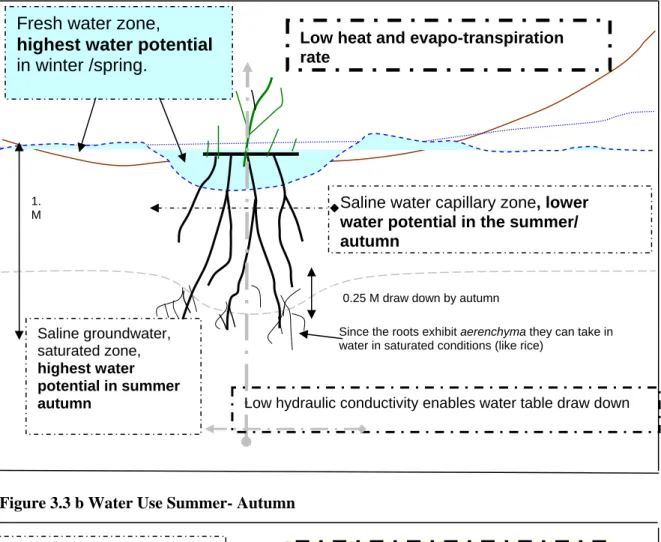
Improved Soil Structure and Organic Content
This impact of the plants on soil structure, drainage and groundwater level will vary depending on soil porosity conditions and aquifer supply. Ferdowsian (2002) suggests that 'Forage' may provide a basis for a new sustainable land use system suitable for the wide valleys of the Western Australian wheat belt, where dense clays predominate. In areas outside of Western Australia's wheat belt, the plants can remove enough salt from the profile to allow the reintroduction of freshwater plants, driving the halophytes to extinction.
In Mexico, a heavy clay, deflocculated soil was planted with Distichlis palmeri and irrigated with drainage water at 15 dS/m.
Farmer Observations of Initial Sites
NyPa Forage™
It is best planted from the edge of arable land into saline, scorched areas that can be flooded in winter. Once established, it will tend to grow in niches where there is little competition from species such as tall wheatgrass. In this situation, it will take action to protect farmland from further salt water rise where hydraulic conductivity or supply of saline aquifers is low.
The forage can reach production of 25 tonnes per ha per harvest with a protein level of up to 17%, an ash content of around 8% and an overall digestibility of over 60%.
NyPa ‘Wild Wheat’®
NyPa Turf™
Environmental Services
Feeding trials with Ruminants
Glasshouse Trials
Milling Characteristics of the Grain
Of particular interest to the health food and gourmet market is that it is gluten-free, has an attractive color and has a pleasant nutty taste.
Commercialisation
The grain from 'Wild Wheat' appears to be suitable for conventional milling equipment used for other cereal grains and yields well compared to other wheat varieties used in Australia based on overseas experience. Produced in collaboration with NyPa International, NyPa Australia and The Institute for International Development, South Australia; www.iid.org. Radial oxygen loss from intact rice roots as affected by distance from tip, respiration and waterlogging.
Effects of waterlogging on the growth and NaCl uptake by vascular plants under saline conditions. Final Report on the Initial Outgrowth Plan of NyPa Halophyte Grasses in South Australia. Scientific Officer, hensing.andrea@saugov.sa.gov.au Kirkwood G Turf Merchant Gin Gin North Perth.
